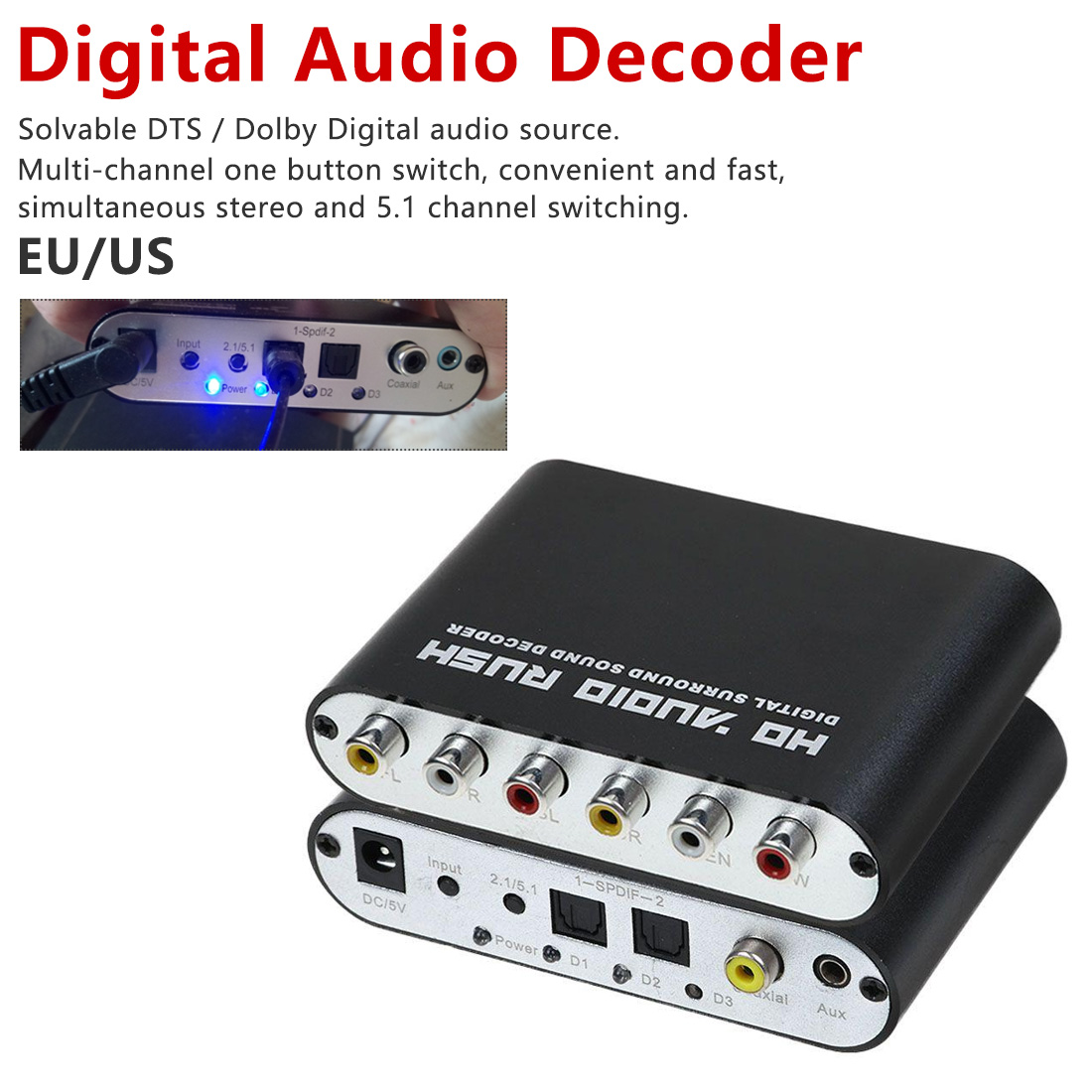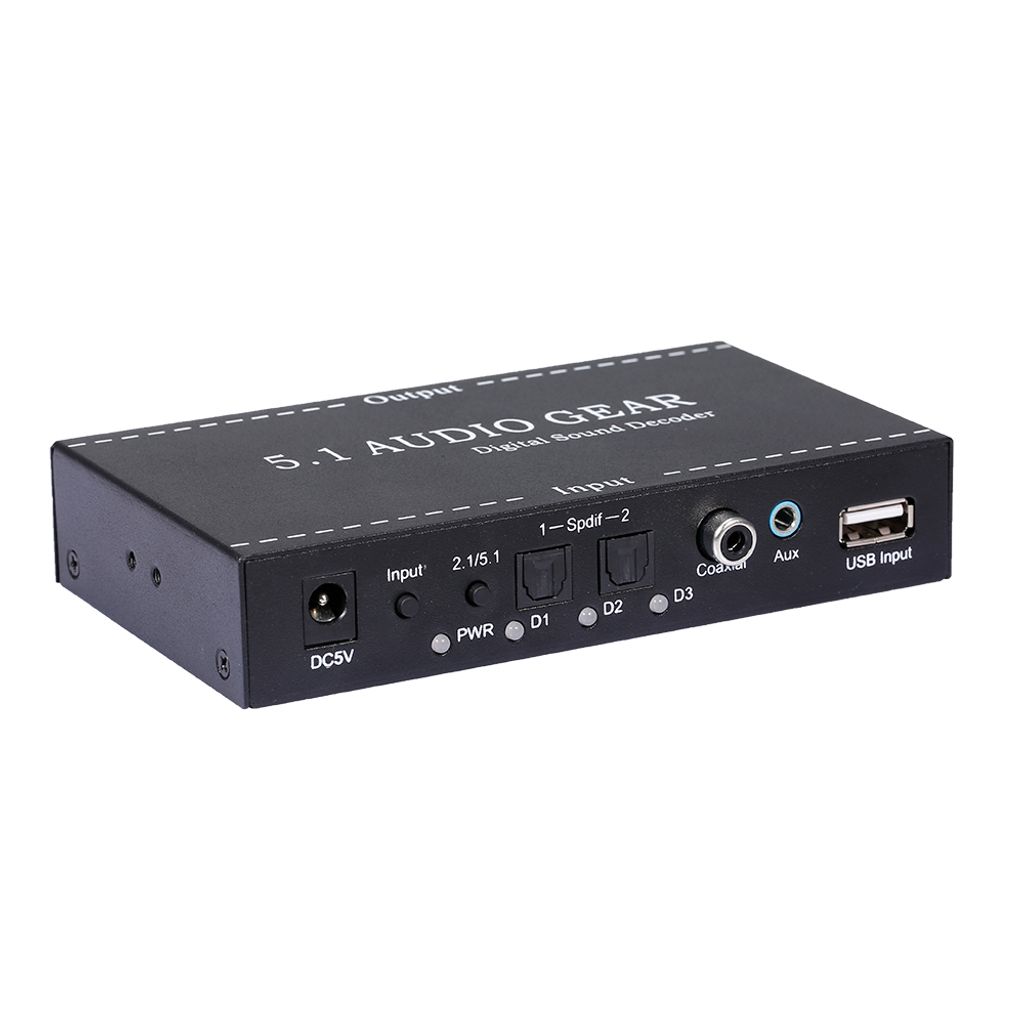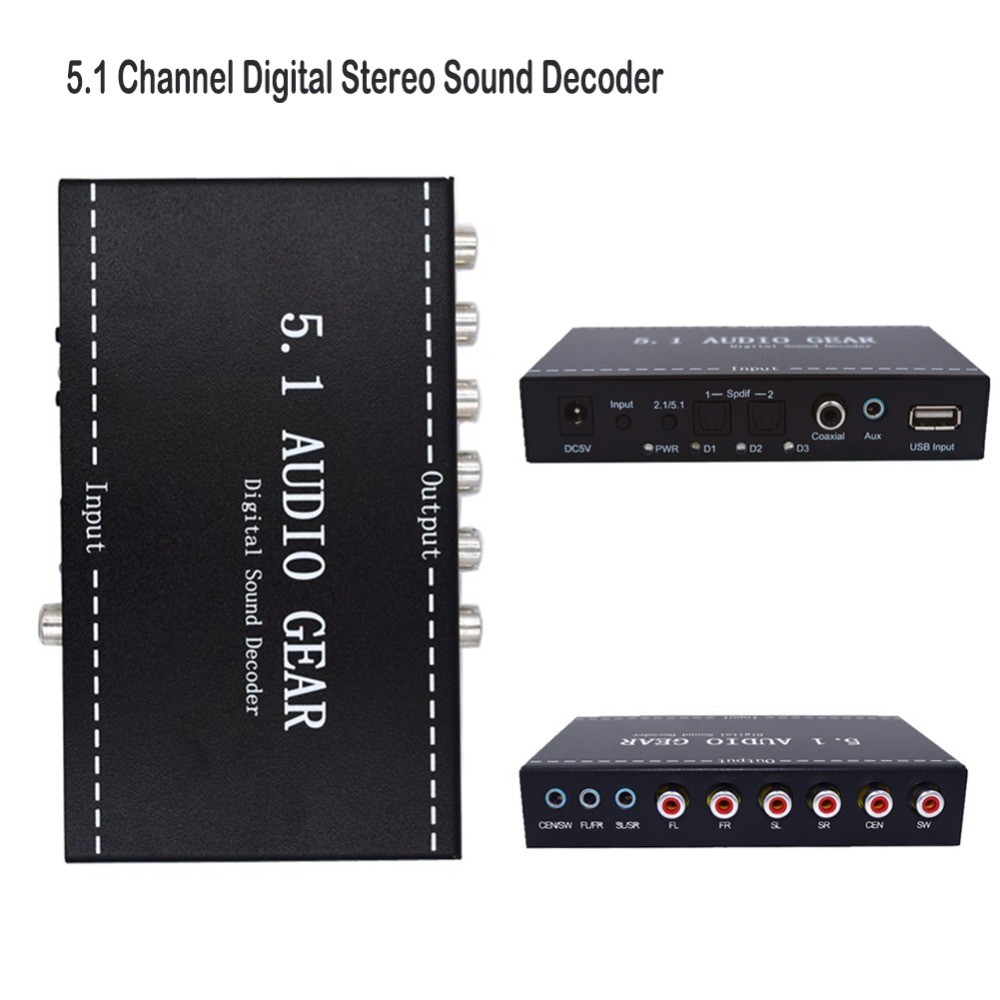

- DIGITAL TO ANALOG AUDIO CONVERTER SURROUND SOUND PORTABLE
- DIGITAL TO ANALOG AUDIO CONVERTER SURROUND SOUND PC
- DIGITAL TO ANALOG AUDIO CONVERTER SURROUND SOUND BLUETOOTH
Though many DACs are standard plug-and-play devices, for a few devices you might require some PC knowledge to setup and operate properly.Īlso remember to get good quality cables, be it USB, coaxial, optical or RCA, to get the best output. Get high-quality music files or sources to get the best output. There is no point spending hundreds or thousands of dollars on a DAC if your home theater has middling audio capabilities. Match the DAC to the quality of your audio hardware. When you decide to buy a new DAC for your audio system, keep these important things in mind: Hi-Fi DACs: If you have some serious double channel audio hardware at your home, you can use these large DAC systems with advanced boards and circuits to get the best audio output possible. Headphone DACs: As their name suggests, you may want to use these to get the most out of your headphones, especially when connected to your home stereo system. The wireless receiver is connected to your sound system or amplifier using regular RCA cables. Usually, they have a transmitter that is connected to the PC via USB.

DIGITAL TO ANALOG AUDIO CONVERTER SURROUND SOUND BLUETOOTH
Wireless DACs: If you want to send the audio to a sound system with wifi or Bluetooth capabilities, you can use this type of DAC. These can be used to boost the headphone output with your laptops/PCs, cell phones, and music players.
DIGITAL TO ANALOG AUDIO CONVERTER SURROUND SOUND PORTABLE
Portable DACs: commonly found models are USB powered, with a built in battery for extra portability. These DACs use either a USB power supply or require AC outlet. They usually offer sockets for speakers, headphones or amps. High-quality external DACs can be divided into several types:ĭesktop USB DACs: you can use these to improve the audio quality on your PC. There are dozens of affordable DACs with the Coaxial/Toslink cables for input and good old RCA cables for output to solve this conundrum. Another popular instance these days is when you buy a new device, like a new TV, which doesn’t have the proper RCA cable output to connect to your existing stereo device. For this, premium quality DACs, with better switchboards and a built-in amp may be ideal. There are several situations in which you may feel the need for a DAC. As a result, buying a high-quality external DAC is advisable to improve audio fidelity and output quality.

But these DACs have wildly variable output quality. All modern digital devices that deal with any audio playback, be it a laptop, cell phone, TV, or music player, have a built-in DAC inside them to convert digital audio files to their analog format. This job is handled by a device called the digital analog converter or DAC. When you play these files on your PC or iPod, they have to be first converted from digital to analog format to enable the hardware (your speakers or earphones) to play them as music. However, if you're primarily in need of a USB sound card, the Creative Sound Blaster X-Fi Surround 5.1 is similarly priced and has a wider range of features in terms of connectivity, gaming audio and surround sound.These days, almost all music and audio files are stored in digital formats like MP3 and FLAC. It's great if you need to connect one or more digital audio sources to a pair of powered stereo speakers and could be a valuable link in some hi-fi systems.

However, its capabilities are limited and it's a rather niche product. The DAC works well on any computer or - if you're only using it to output audio from an S/PDIF source - without one. It's worth noting that the DAC is only designed to work with 2-channel audio, so it can't handle Dolby or DTS encoded 5.1 audio streams, but can take any plain PCM stream and output stereo sound. To convert audio from the S/PDIF inputs you don't need to have the DAC connected to a PC - all that's needed in this mode is a USB power source. A switch on the back allows you to choose which of the three inputs' signals are sent to the headphone and phono outputs. That covers the DAC's capabilities as a USB sound card, but you can also use it as a standalone device to convert a compressed digital audio stream from an optical or coaxial S/PDIF input to analogue sound (neither a coaxial cable nor an optical TOSlink cable are provided, though).


 0 kommentar(er)
0 kommentar(er)
